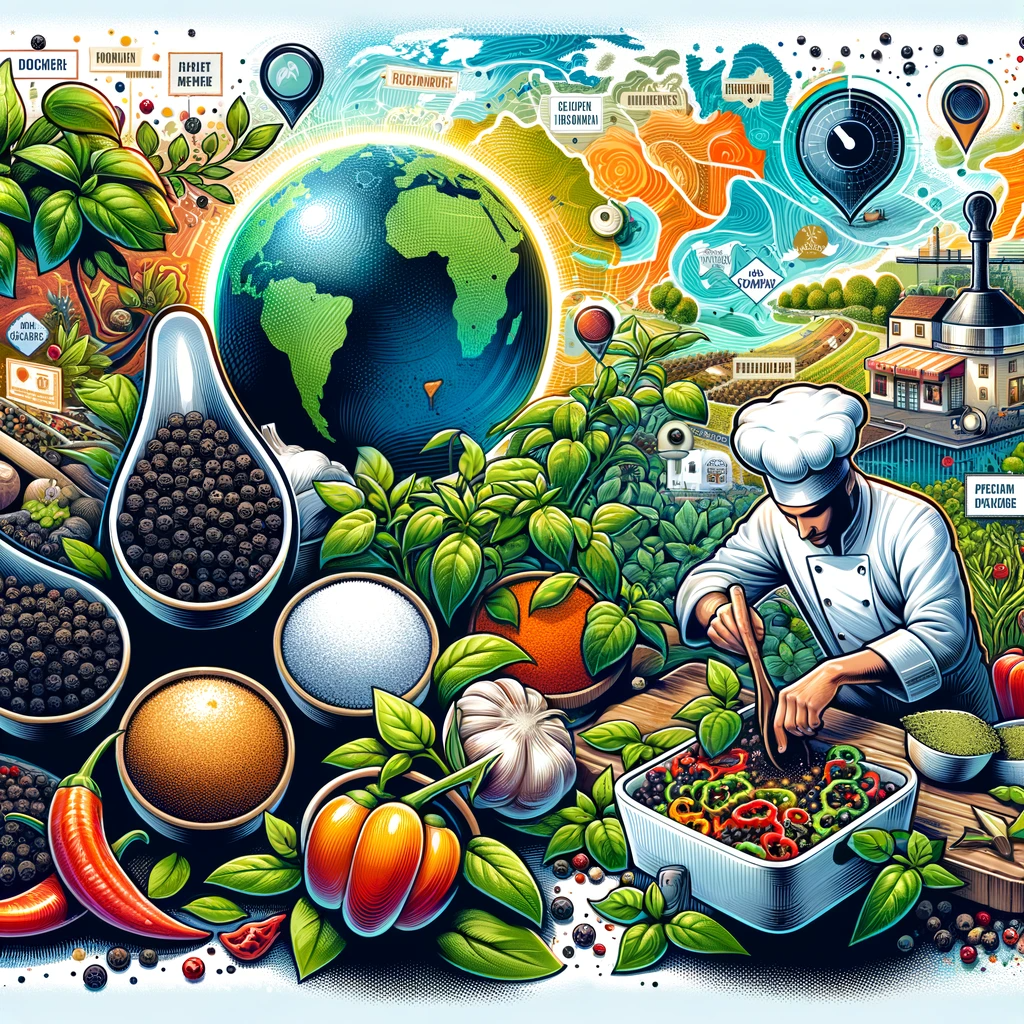Cajun and Creole cuisine are renowned for their bold and flavorful dishes, with pepper playing a pivotal role in elevating their taste profiles. In this article, we will explore the world of peppers in Cajun and Creole cooking, delving into their history, types, and how to use them to create mouthwatering dishes that capture the essence of these vibrant cuisines.
A Brief History of Cajun and Creole Cuisine
Before we dive into the world of peppers, let’s take a quick look at the history of Cajun and Creole cuisine. These two distinct culinary traditions have their roots in Louisiana, with each offering a unique blend of flavors and influences.
Cajun Cuisine
Cajun cuisine is the result of French Acadian immigrants who settled in the rural areas of Louisiana in the 18th century. These settlers adapted their French culinary traditions to the local ingredients and flavors, giving rise to what we now know as Cajun cuisine. Key ingredients include rice, seafood, and of course, a generous amount of peppers.
Creole Cuisine
Creole cuisine, on the other hand, developed in New Orleans and is influenced by French, Spanish, African, and Caribbean culinary traditions. Creole dishes often feature a more refined and complex flavor profile, with a variety of peppers used to add depth and heat to the dishes.
The Role of Pepper in Cajun and Creole Cooking
Peppers are an essential component of both Cajun and Creole cooking, contributing to the distinctive flavors that make these cuisines so beloved. Here are some of the key roles that peppers play:
Flavor Enhancement
Peppers, in their various forms, bring a unique depth of flavor to Cajun and Creole dishes. Whether they are used fresh, dried, or in the form of hot sauces, peppers add a kick of heat and a burst of flavor that sets these cuisines apart.
Heat Variability
One of the remarkable aspects of peppers in Cajun and Creole cooking is their ability to provide a range of heat levels. From mild to scorching hot, chefs can choose the type and quantity of pepper to achieve the desired level of spiciness in a dish.
Versatility
Peppers in Cajun and Creole cooking come in many forms, including bell peppers, cayenne peppers, jalapeños, and the famous Tabasco pepper. This diversity allows for a wide range of culinary applications, from seasoning to garnishing.
Types of Peppers Used in Cajun and Creole Cooking
Now that we understand the significance of peppers in these cuisines, let’s explore some of the most commonly used pepper varieties:
1. Cayenne Pepper
Cayenne pepper is a staple in both Cajun and Creole kitchens. It is known for its fiery heat and vibrant red color. Ground cayenne pepper is used to add spiciness to dishes like gumbo and jambalaya.
2. Bell Pepper
Bell peppers come in various colors, including green, red, and yellow. While they are not as spicy as some other peppers, they add a sweet and mild flavor to dishes like étouffée and maque choux.
3. Jalapeño Pepper
Jalapeño peppers are used to infuse a moderate level of heat and a distinctive flavor into dishes like stuffed peppers and sauces. They are often pickled or used fresh.
4. Tabasco Pepper
Tabasco peppers are famous for their role in creating the iconic Tabasco hot sauce. This pepper variety brings intense heat and a tangy kick to dishes, making it a must-have condiment in Cajun and Creole cuisine.
5. Serrano Pepper
Serrano peppers are another popular choice for adding heat to dishes. They are often used in salsas, marinades, and spicy soups.
Tips for Using Peppers in Cajun and Creole Cooking
Now that we’ve covered the types of peppers, let’s explore some practical tips for incorporating them into your Cajun and Creole dishes:
1. Start Mild
If you’re new to Cajun and Creole cuisine or not accustomed to spicy foods, begin with milder peppers like bell peppers and gradually work your way up to spicier varieties.
2. Balance Flavors
Peppers should complement the other flavors in your dish. Balance the heat of the peppers with the sweetness of vegetables or the richness of meats to create a harmonious flavor profile.
3. Experiment with Hot Sauces
Explore the wide array of hot sauces made from different pepper varieties. These sauces can be drizzled on dishes to add both heat and flavor.
4. Fresh vs. Dried
Consider using fresh peppers for a crisp texture and vibrant flavor, or opt for dried peppers for a concentrated, smoky taste. The choice depends on the specific dish you are preparing.
5. Handle with Care
When working with hot peppers, always wear gloves and avoid touching your face or eyes. Wash your hands thoroughly after handling them.
In conclusion, peppers are the heart and soul of Cajun and Creole cooking, adding depth, heat, and flavor to a rich culinary tradition. Whether you’re a seasoned chef or a home cook eager to explore these cuisines, mastering the use of peppers will be key to creating authentic and delicious dishes that pay homage to the vibrant cultures of Louisiana. So, roll up your sleeves, gather your peppers, and start cooking up a taste of the bayou!
